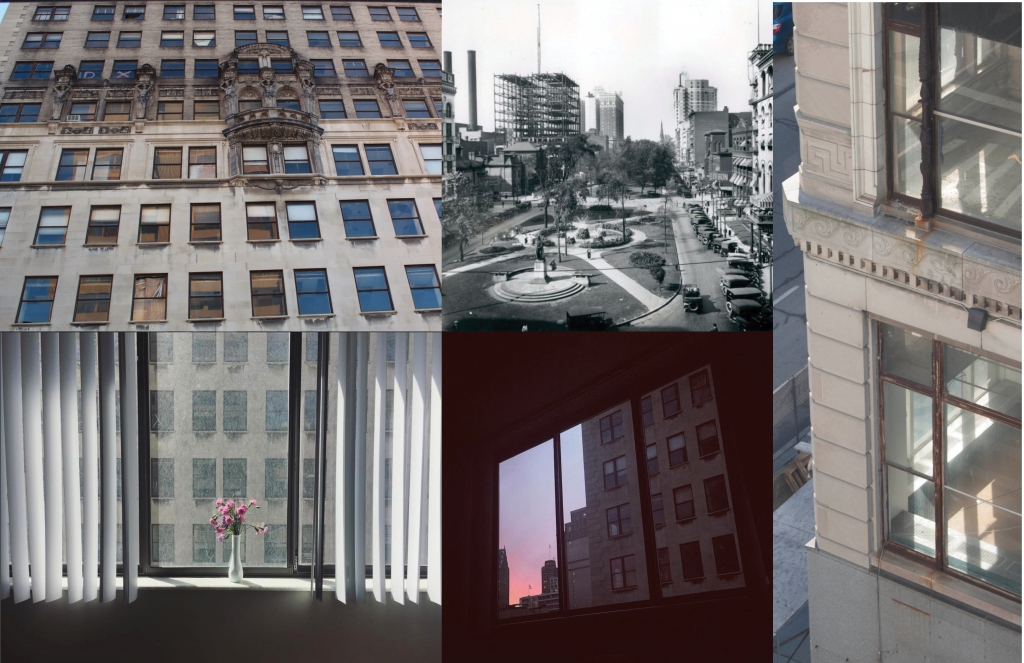
Last fall, I moved into an eighth floor apartment in downtown Detroit. The apartment is on Washington Boulevard, one of the major radial thoroughfares of Augustus Woodward’s plan for the city following the fire of 1805. My apartment doesn’t look onto the grand boulevard. It faces south, across Grand River Avenue, directly into the facade of a vacant building, the Book Tower. The Book Tower is a 38-story, Italian Renaissance style skyscraper. Construction for the building began in 1916 and it took a decade to complete. It was the tallest building in Detroit for a brief moment before the Penobscot was finished in 1928. After half a century of being one of the most prestigious addresses in downtown, the building met a fate similar to many of its neighbors.
The empty facade of the Book Tower is a backdrop to my daily life. I love watching Detroit’s light play across the windows, painting them a spectrum of pink, yellow, orange and purple. I love that it is empty. Besides the obvious benefits of privacy, there is a certain type of architectural voyeurism in it. I often find myself looking down into a corner of sunlight on a former office floor or looking up at broken ceiling tiles. When guests are over, we go out on the balcony and peer up to see the beautiful decorative top floors. At night, gazing up, one can imagine Batman standing on the ledge in front of the green copper roof.
Last winter, after working past midnight at my downtown office, a Bedrock security guard escorted me home. We walked up Woodward and made small talk about the city and our experiences in downtown Detroit. As the Book Tower came into view, the security guard told me that the building “gave him the creeps” and he described the stories on how the building is haunted by suicides. One story was about a woman suffering from mental illness that jumped from the tower and landed on a man, killing them both. The other was on a previous owner who had committed suicide on the top floor. After researching the stories, I couldn’t find anything online about an owner’s suicide. However, the woman’s suicide and double fatality did in fact happen in 1973. The event marked the beginning of a few decades of bad luck for the building. The long-time owner of the building defaulted on his mortgage in 1988 and the building changed hands a few times over the next twenty years. In the early 2000’s big renovation plans were made for the building but they all fell through. The last tenant, Bookie’s Tavern, moved out in 2009.
Despite the bad juju and history of struggles, hope is on the horizon. In 2015, Dan Gilbert bought the building for $30 million and plans to renovate it. I was startled and excited the other morning to look over and see a construction worker surveying windows. There is evidence of Gilbert seeing through with his investment and I look forward to having new, lively neighbors in the near future.
